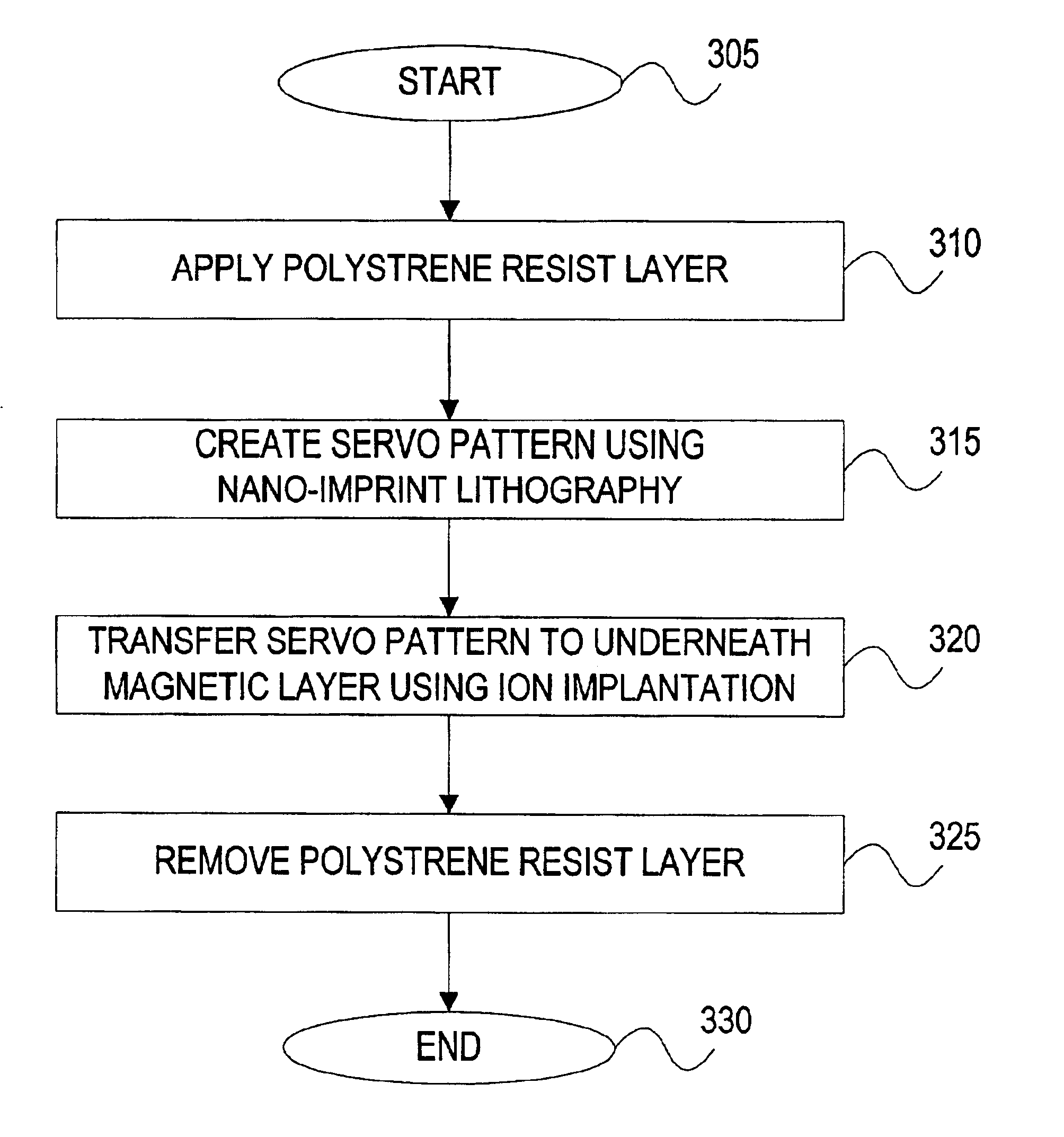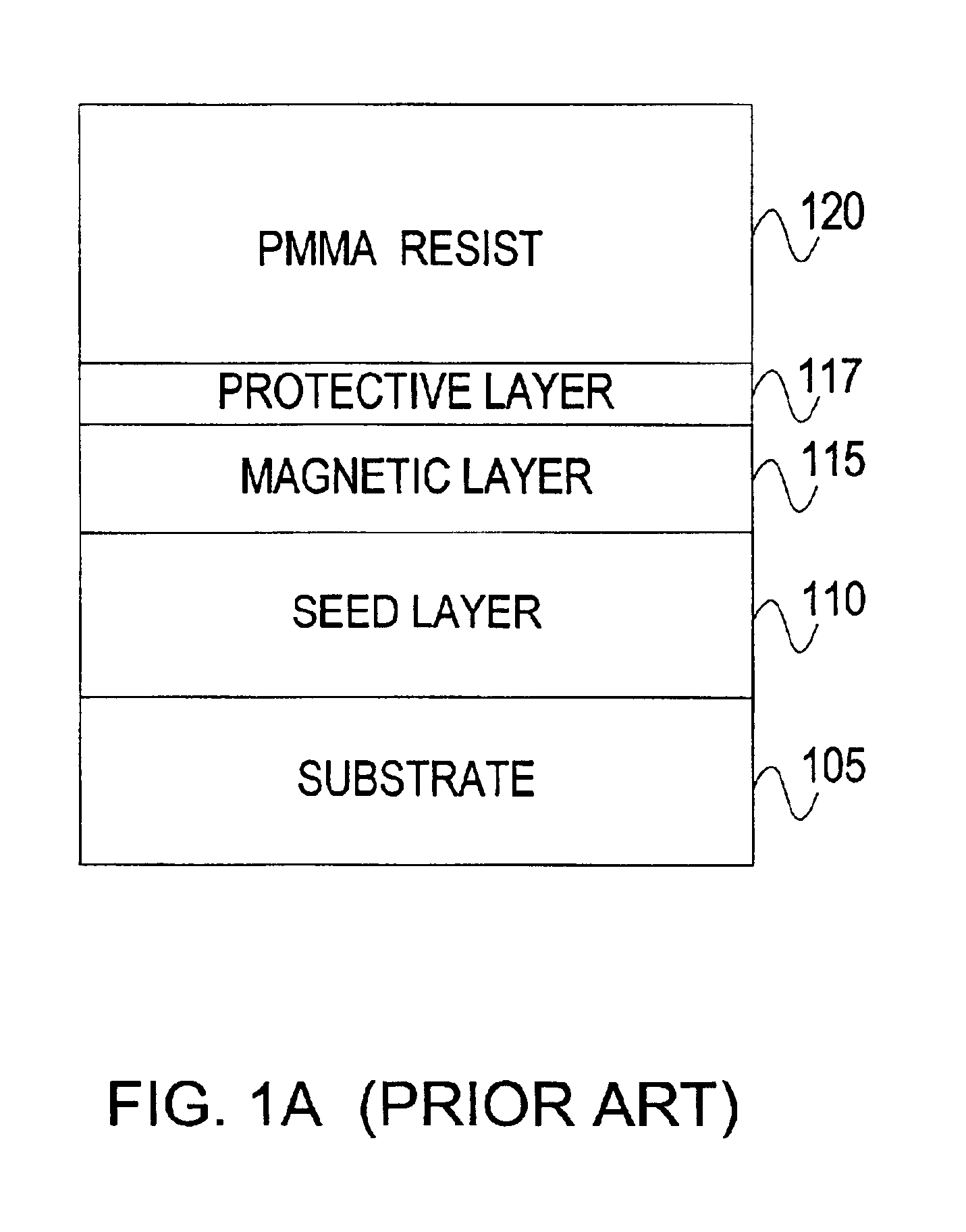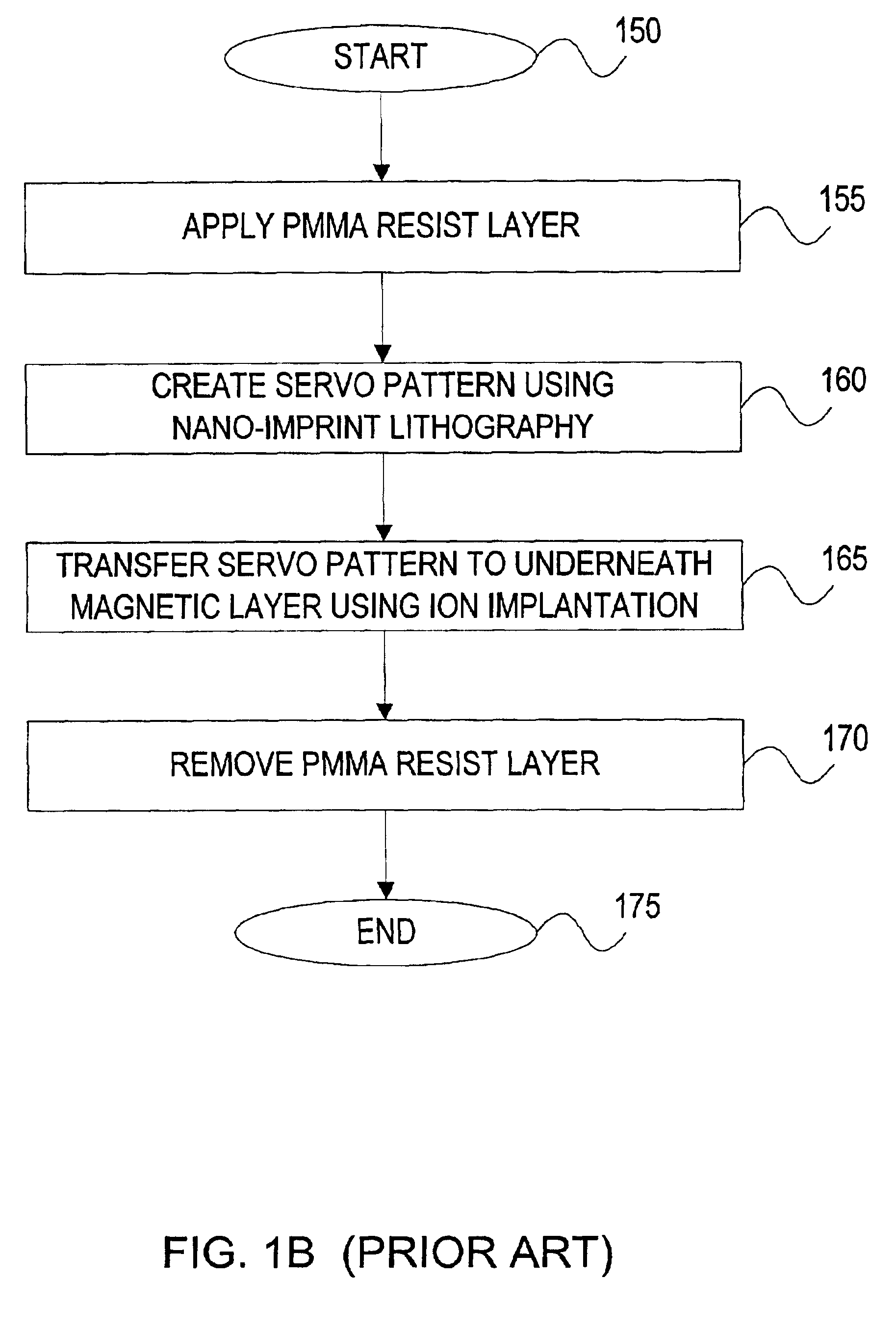Polystyrene as a resist for making patterned media
a technology of polystyrene and resist, which is applied in the field of patterned magnetic media, can solve the problems of poor ion stopping effectiveness, reduced thickness, and implantation on the magnetic properties of the magnetic layer, and achieve excellent ion stopping properties, reduce coercivity (hc), and reduce mr
- Summary
- Abstract
- Description
- Claims
- Application Information
AI Technical Summary
Benefits of technology
Problems solved by technology
Method used
Image
Examples
Embodiment Construction
The invention provides a system and method for nano-imprint lithography and subsequent ion implantation for servo pattern media.
FIG. 2 is a block diagram showing a magnetic medium, ready for patterning, having a substrate 105, a seed layer 110, a magnetic layer 115, a protective layer 117 and a polystyrene resist layer 210. Polystyrene resist layer 210 overlays the protective layer 117 in accordance with one embodiment of the invention. Although the preferred embodiment is described using polystyrene as the thermoplastic resist material, the invention is not limited to polystyrene. Other forms of polymers, can any styrene co-polymers, can also be used as a thermoplastic resist material. The resist materials used in the preferred embodiment all have thermoplastic properties.
Although, the preferred embodiment of FIG. 2 shows the seed layer 110 deposited between the substrate 105 and the magnetic layer 115 the invention is not dependent on the presence of the seed layer 110. Since the ...
PUM
| Property | Measurement | Unit |
|---|---|---|
| temperatures | aaaaa | aaaaa |
| temperatures | aaaaa | aaaaa |
| thermoplastic | aaaaa | aaaaa |
Abstract
Description
Claims
Application Information
 Login to View More
Login to View More - R&D
- Intellectual Property
- Life Sciences
- Materials
- Tech Scout
- Unparalleled Data Quality
- Higher Quality Content
- 60% Fewer Hallucinations
Browse by: Latest US Patents, China's latest patents, Technical Efficacy Thesaurus, Application Domain, Technology Topic, Popular Technical Reports.
© 2025 PatSnap. All rights reserved.Legal|Privacy policy|Modern Slavery Act Transparency Statement|Sitemap|About US| Contact US: help@patsnap.com



